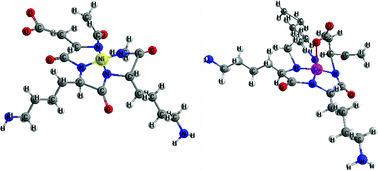Coordination of Cu2+and Ni2+ with the histone model peptide of H2B N-terminal tail (1-31 residues): A spectroscopic study†
Abstract
The interaction of

* Corresponding authors
a
University of Ioannina, Department of Chemistry, Ioannina, Greece
E-mail:
nhadjis@uoi.gr, gmalandr@uoi.gr
Fax: +302651008786
Tel: +302651008420+302651008407
The interaction of

 Please wait while we load your content...
Something went wrong. Try again?
Please wait while we load your content...
Something went wrong. Try again?
A. M. Nunes, K. Zavitsanos, G. Malandrinos and N. Hadjiliadis, Dalton Trans., 2010, 39, 4369 DOI: 10.1039/B927157K
To request permission to reproduce material from this article, please go to the Copyright Clearance Center request page.
If you are an author contributing to an RSC publication, you do not need to request permission provided correct acknowledgement is given.
If you are the author of this article, you do not need to request permission to reproduce figures and diagrams provided correct acknowledgement is given. If you want to reproduce the whole article in a third-party publication (excluding your thesis/dissertation for which permission is not required) please go to the Copyright Clearance Center request page.
Read more about how to correctly acknowledge RSC content.
 Fetching data from CrossRef.
Fetching data from CrossRef.
This may take some time to load.
Loading related content
